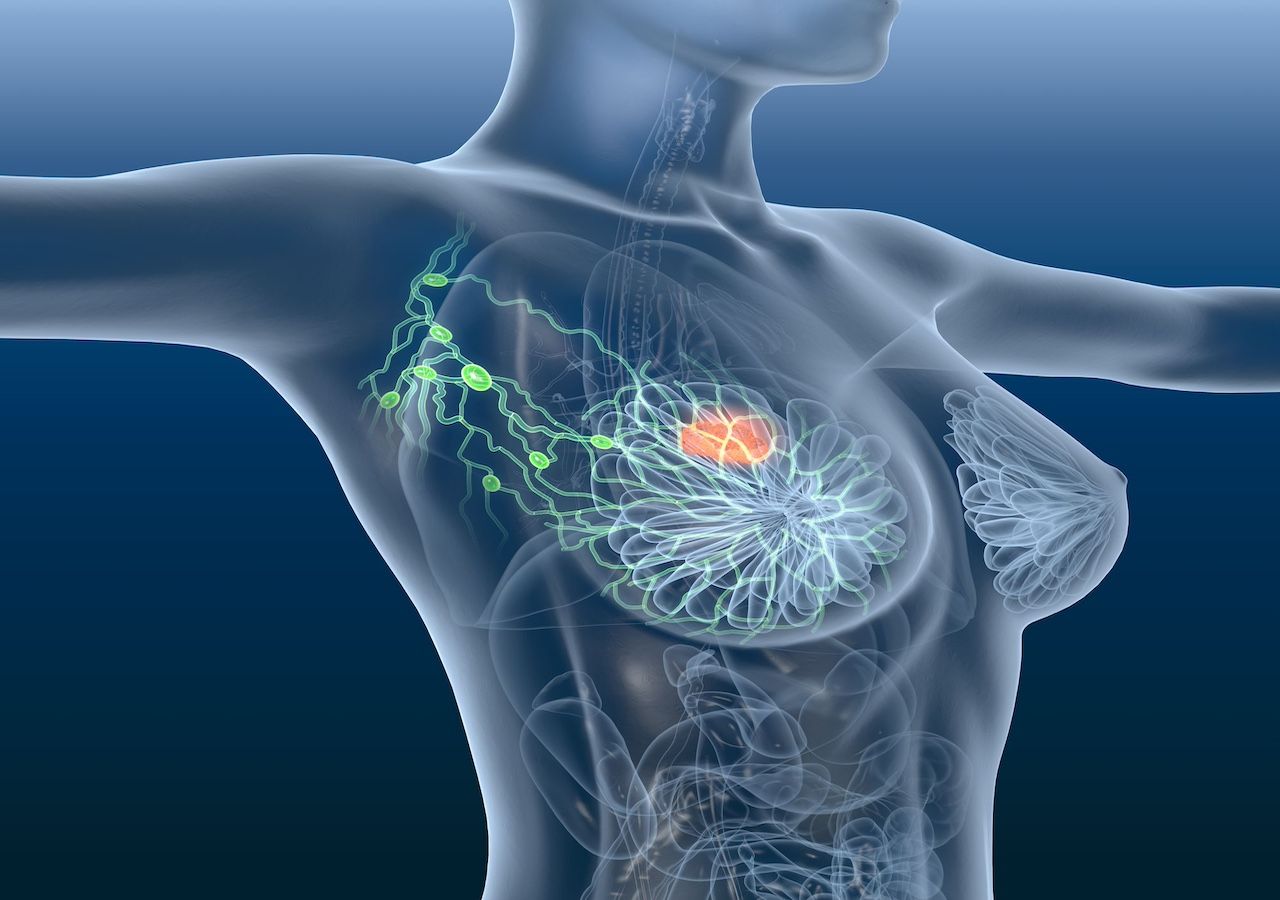- Center on Health Equity & Access
- Clinical
- Health Care Cost
- Health Care Delivery
- Insurance
- Policy
- Technology
- Value-Based Care
CVD and BMI Linked to Postmenopausal Breast Cancer
Women who developed a cardiovascular disease or type 2 diabetes were at a higher risk of developing breast cancer post menopause, a recent study found.
Women with cardiovascular disease and obesity were at an increased risk of breast cancer compared with women with obesity alone, according to a recent study.1
The prevalence of obesity and overweight in adults has nearly doubled since the early 1990s, with nearly 2.5 billion adults aged 18 and older falling into this category. Research has shown that excess body weight and cardiovascular disease are established risk factors for postmenopausal breast cancer and the leading causes of death in the US.
In women who have overweight or obesity in adulthood, the risk of breast cancer is 1.15 times higher among those who also have a history of CVD. | Image Credit: vitanovski - stock.adobe.com

The new study, which was published in Cancer: An International Interdisciplinary Journal of the American Cancer Society, aimed to determine whether body mass index (BMI) combined with cardiometabolic diseases (CMD)—such as cardiovascular disease (CVD) and type 2 diabetes (T2D)—was linked with postmenopausal women developing breast cancer. T2D has been linked to increased risk of postmenopausal breast cancer because of elevated insulin and insulin-like growth factor 1 (IGF-1), thus influencing cancer-growth properties.1 Myocardial infarction is also theorized to accelerate breast cancer due to insulin and IGF-1 in addition to immunosuppression by activating preexisting, dormant cancer cells.
Supporting prior research supporting BMI-related cancers, 2 European studies referenced in the study demonstrated that when combined, CVD and obesity had a higher association with breast cancer than when assessed separately. This encouraged researchers to explore the association specifically between BMI and postmenopausal breast cancer in women with and without CVD or T2D.
The investigating team from the International Agency for Research on Cancer, led by Heinz Freisling, PhD, pooled and analyzed data from the European Perspective Investigation into Cancer and Nutrition and the UK Biobank. Combined, both cohorts consisted of 168,547 postmenopausal women who were not diagnosed with CVD or T2D when they agreed to participate. After a median follow-up of 10.7 years in the EPIC cohort and 10.9 years in the UKB cohort, 6793 postmenopausal women developed breast cancer. In both cohorts, BMI was more strongly associated with breast cancer risk in women with CVD (HR, 1.31; 95% CI, 1.16-1.47) than in women without CVD (HR, 1.13; 95% CI, 1.11-1.16; r interaction = .02). Yet, the evidence of a difference for increased risk of breast cancer in women with T2D and a higher BMI (HR per 1‐SD increment, 1.20; 95% CI, 1.06-1.36) and those without T2D was sparse.
In the EPIC cohort, the observed joint association of overweight and CVD led to 2.79 (95% CI, −0.07 to 5.65) more cases of breast cancer per 1000 person‐years than expected. And in the UKB cohorts, the observed joint association of overweight and CVD led to 1.27 (95% CI, −0.03 to 2.57) more cases of breast cancer per 1000 person‐years than expected.
A separate case-control study also found that individuals with more advanced or late-stage breast cancer diagnoses were more likely to present with CVD.2 More specifically, those with advanced breast cancer at diagnosis were 10% more likely to have preexisting CVD.
“Our study supports previous evidence that being overweight or obese during adulthood increases the risk of breast cancer among postmenopausal women and adds evidence that such risk is 1.15 times stronger among women with a history of CVD than among women without CVD,” the authors wrote. “This suggests that among postmenopausal women with CVD, prevention of obesity may lead to a greater reduction in breast cancer incidence compared to the general population.”
References
1 Fontvieille E, Jansana A, Peruchet‐Noray L, et al. Body mass index and breast cancer risk among postmenopausal women with and without cardiometabolic diseases: Findings from two prospective cohort studies in Europe. Cancer. 2025;131(14). doi:10.1002/cncr.35911
2. Angelov I, Haas AM, Brock E, et al. Cardiovascular disease and breast cancer stage at diagnosis. JAMA Netw Open. 2025;8(1):e2452890. doi:10.1001/jamanetworkopen.2024.52890
